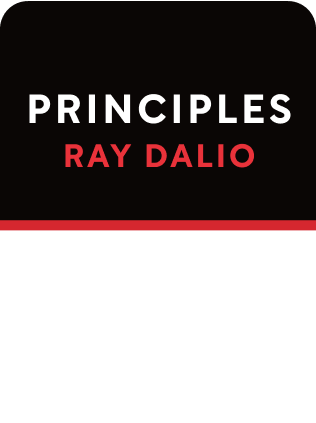

This article is an excerpt from the Shortform summary of "Principles: Life and Work" by Ray Dalio. Shortform has the world's best summaries of books you should be reading.
Like this article? Sign up for a free trial here .
What is productive conflict? How can you resolve conflict without resorting to an argument?
According to Ray Dalio, productive conflict is the key to successful cooperation. The only trick is to engage in productive conflict without triggering emotional explosions. Your goal is not to prove that you’re right, but rather to find out which view is true and decide what to do about it.
Dalio offers the following tactics for productively disagreeing with others.
Tactics for Productive Conflict
According to Dalio, humans evolved to support cooperation. Groups that work together accomplish more than individuals who work for their own self-interest. Thus, it’s important to use productive conflict to work through disagreements, ultimately leading to cooperation. To this end, Dalio recommends that you:
Ask questions rather than make statements. (Shortform note: Asking yourself questions can also help you work through disagreements. One question you can ask is, “What would happen if I was wrong?” If the only downside is that your ego would be hurt, then it’s time to move on from the disagreement.)
Focus more on the substance of what is being said, rather than the style of it. Even if the other person says something somewhat sarcastically or in a tone you don’t like, don’t automatically assume it’s a criticism. Try to focus on the core of what they’re saying. Repeat back to the other person their own perspective to make sure you understand it. (Shortform note: According to Difficult Conversations, confusing someone’s intent with their impact is what leads to misunderstanding. Repeating what you’re getting from the conversation ensures that this confusion doesn’t happen—you both clearly understand the intent.)
Discuss respectfully and dispassionately. Calmly call out the other person when the disagreement gets too emotional. If you start talking over each other, engage the two-minute rule—each of you can claim two minutes to get your main thoughts out without interruption, while the other person has to stay silent and listen. (Shortform note: When emotions are running high or the other person refuses to listen, you can verbalize what’s happening in the conversation. For example, if the other person is being impatient and rushing through the conversation, you could say, “I’ve noticed that you seem to be short on time. Can we schedule a meeting so that we can focus on this?” However, this can increase tension, so carefully consider if it’s a suitable tactic for your particular conversation.)
If you can’t agree, find a person you both respect to moderate. (Shortform note: Even with a moderator, sometimes you just won’t be able to come up with a solution that’s satisfactory to both parties. In this case, you need to decide whether it’s better for you to settle or to accept the consequences of not settling.)
Dalio says that productive conflict requires that yoube open-minded and assertive at the same time. You must make an effort to see things through the other person’s eyes, while communicating clearly how you see things. You’ll arrive at the best ideas when you’re both driven by the fear that you’re missing important information and the desire to find the best way forward.
(Shortform note: When you’re assertive without being open-minded during conflict, you have what’s referred to as a “combative mindset,” which, of course, won’t lead to productive conflict. In The Anatomy of Peace, the Arbinger Institute says that this mindset may come from a feeling of superiority, inferiority, or entitlement, or a desire to be seen in a positive light. Overcome your combative mindset by being aware of your triggers and reactions, then recalling situations where you reacted positively. This can help you shift your perspective and see the conflict through a different, more productive lens.)
As you continually practice seeking out other opinions, Dalio says you may find that people will be naturally reluctant to disagree with you. This might be because they’ve been trained to agree to maintain social cohesion, or because they want to avoid emotional explosions.
Letting the Best Ideas Win, No Matter Their Source
Practicing productive conflict is critical to building an environment in which the best ideas win, regardless of where or whom they came from. Dalio believes that this environment creates the best system for making decisions because you have more information from different people, rather than limited information from just one person whose perspective may be limited by blind spots.
Dalio says that the best way to build an environment in which the best ideas win regardless of their source is to bring together smart, independent thinkers who can engage in productive conflict and get past disagreements using agreed-upon systems.
(Shortform note: If you plan to implement this principle, it’s important to create an environment where people feel comfortable going against the consensus. In Originals, Adam Grant says you can surface dissenting ideas by gathering people who have diverse viewpoints and a reputation for speaking up. You can also ask employees to name other people who aren’t vocal enough about their ideas. Grant cites Bridgewater as an example of an organization that does this well.)

———End of Preview———
Like what you just read? Read the rest of the world's best summary of Ray Dalio's "Principles: Life and Work" at Shortform .
Here's what you'll find in our full Principles: Life and Work summary :
- How Ray Dalio lost it all on bad bets, then rebounded to build the world's largest hedge fund
- The 5-step process to getting anything you want out of life
- Why getting the best results means being relentlessly honest with everyone you work with






